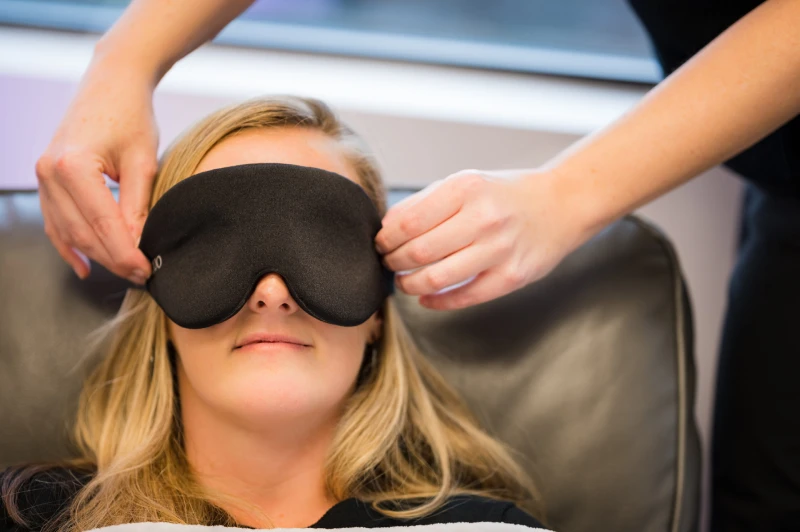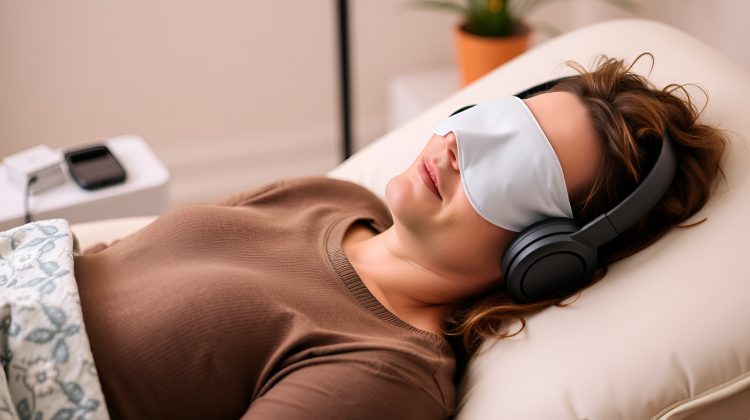The Psychedelic Renaissance: From Counterculture to Clinical Trials
Once relegated to the fringes of counterculture, psychedelics are rapidly re-entering mainstream psychiatry. Substances like psilocybin, ketamine, and MDMA, long dismissed as dangerous or recreational, are now at the forefront of mental health innovation. With depression rates at record highs and traditional SSRIs often providing incomplete relief, the question is no longer if psychedelics can help—but how, when, and for whom. The surge in clinical research has been staggering. Since the FDA granted “Breakthrough Therapy” status to psilocybin for treatment-resistant depression, major academic centers have launched rigorous trials. At Johns Hopkins, NYU, and Imperial College London, patients report profound emotional clarity, long-term mood improvements, and a sense of renewed meaning. Meanwhile, ketamine—an anesthetic with dissociative properties—is already FDA-approved in its esketamine form (Spravato) for major depression and suicidality. Administered in clinics under medical supervision, it’s quickly becoming a mainstream alternative for patients who fail to respond to antidepressants. But psychedelics aren’t plug-and-play replacements. They present powerful therapeutic potential—and real risks. As enthusiasm builds, mental health professionals, policymakers, and patients must carefully weigh the promise against the pitfalls.
Ketamine: The First Legal Psychedelic in Clinical Psychiatry
Ketamine’s unique pharmacology sets it apart from both SSRIs and classic psychedelics. Rather than altering serotonin levels gradually, ketamine acts rapidly on the glutamate system—specifically, by antagonizing NMDA receptors and triggering a cascade that increases synaptic plasticity. For many patients, relief from suicidal ideation or deep depression can occur within hours, not weeks. This rapid action has made ketamine a lifeline, especially for those with treatment-resistant depression or bipolar disorder. Clinics across the U.S., Canada, and Europe now offer ketamine infusions, often combined with psychotherapy for deeper integration. Intranasal esketamine (Spravato) is the only form approved by the FDA and covered by insurance in some cases. However, ketamine is not without controversy. Its antidepressant effects may wane over time, requiring maintenance doses that carry risks of dependency or cognitive side effects. And because it’s a dissociative anesthetic, misuse outside clinical settings remains a concern. Still, compared to traditional SSRIs—which can take 4–6 weeks to show effects and often cause blunted emotion or sexual dysfunction—ketamine offers a new blueprint: fast, mechanistically distinct, and potentially transformative when paired with skilled guidance.

Psilocybin and the Microdosing Movement: Hope or Hype?
Psilocybin, the active compound in “magic mushrooms,” is capturing attention not only in high-dose clinical trials but also among self-experimenters embracing microdosing. In structured therapeutic settings, psilocybin induces a 4–6 hour altered state, often characterized by visual distortions, emotional catharsis, and ego dissolution. In research trials, a single high-dose psilocybin session, when paired with psychotherapy, has shown dramatic reductions in depression and anxiety—even for patients with chronic, treatment-resistant symptoms. These effects are often durable, with improvements lasting weeks or even months. Yet outside clinical environments, microdosing—typically 5–10% of a psychoactive dose—is gaining popularity. Users report enhanced creativity, mood stability, and reduced anxiety, though most of the evidence remains anecdotal. Ongoing studies at institutions like UC San Francisco and Maastricht University aim to validate (or debunk) these claims. For now, clinical researchers remain cautious. Unlike ketamine, psilocybin is not yet legal outside trials in most jurisdictions. And even in low doses, psychedelic substances may trigger anxiety, mania, or psychosis in susceptible individuals. The rise in unsupervised use has prompted warnings from medical professionals: while the therapeutic potential is real, self-dosing remains a gamble.
Integration Therapy: The Hidden Pillar of Psychedelic Healing
A psychedelic trip, no matter how profound, is only the beginning. Lasting healing often depends on what comes next—how insights are processed, understood, and integrated into daily life. That’s where integration therapy comes in. Whether through talk therapy, body-based practices, journaling, or community circles, integration helps anchor psychedelic insights into behavioral change. Without it, experiences that feel revelatory in the moment may fade or even destabilize. In clinical studies, integration is non-negotiable. Trained therapists support patients before, during, and after the psychedelic experience. They help unpack difficult emotions, challenge unhelpful narratives, and reframe traumatic memories. For instance, a patient who experiences a vision of childhood neglect during psilocybin treatment may need weeks of therapy to fully make sense of it and translate that insight into improved relationships or self-compassion. Integration also plays a crucial role in harm reduction. Not all psychedelic experiences are pleasant—some involve intense fear, grief, or ego dissolution. Proper therapeutic support helps transform these “bad trips” into meaningful breakthroughs. Increasingly, psychedelic integration specialists are forming a new category of mental health professionals: trained not just in traditional talk therapy, but in trauma, somatics, and non-ordinary states of consciousness.
Contraindications and Cautionary Tales: Who Should Not Take Psychedelics?
Despite growing enthusiasm, psychedelics are not a cure-all—and not suitable for everyone. Certain psychiatric conditions, particularly schizophrenia, bipolar I disorder, and borderline personality disorder, can be exacerbated by psychedelics. Even for people without preexisting diagnoses, psychedelic experiences can unearth repressed trauma or lead to temporary depersonalization, confusion, or emotional dysregulation. A key difference between psychedelics and antidepressants is predictability. SSRIs tend to work gradually and consistently across large populations. Psychedelics, by contrast, can be highly variable in effect depending on mindset (“set”), environment (“setting”), and the individual’s psychological history. For individuals with a family history of psychosis or those in an acute crisis, psychedelics could worsen symptoms or destabilize functioning. Medication interactions also matter. SSRIs can dull the effects of psilocybin, while combining MAOIs with certain psychedelics can cause dangerous serotonin syndrome. Physical health should be considered, too. For example, ketamine may raise blood pressure, posing a risk for people with cardiovascular issues. That’s why thorough screening is essential before psychedelic therapy. Patients should be assessed by trained clinicians, not just psychedelic enthusiasts. The path to healing must be paved with both hope and clinical caution.
Legal Status: A Global Patchwork in Motion
The legal status of psychedelics varies dramatically across the globe, creating a confusing—and evolving—landscape for users and practitioners. In the United States, ketamine is FDA-approved and available through clinics, while psilocybin remains a Schedule I substance at the federal level. However, cities like Denver, Oakland, and Seattle have decriminalized psilocybin, and Oregon has launched a regulated framework for psilocybin-assisted therapy. Canada has granted compassionate use exemptions for psilocybin in palliative care, and clinical trials are progressing. In Australia, the Therapeutic Goods Administration reclassified psilocybin and MDMA in 2023, allowing psychiatrists to prescribe them under tight regulations. Meanwhile, in the Netherlands, psilocybin truffles (a legal variant) can be used in supervised retreats. Jamaica and Costa Rica have become hotspots for psychedelic tourism, offering ayahuasca and mushroom ceremonies. Yet legality doesn’t guarantee safety. In unregulated retreats, stories of abuse, lack of medical oversight, and psychological harm have surfaced. The challenge for policymakers is to create frameworks that preserve access while ensuring safety, ethical standards, and clinical efficacy. The coming years may see a broader international movement toward regulation—not prohibition or laissez-faire, but structured, trauma-informed care.
Could Psychedelics Replace Antidepressants? A Nuanced Outlook
So, will psychedelics render traditional antidepressants obsolete? Not quite. Rather than replacements, they may become powerful complements—especially for those who don’t respond to SSRIs or who seek deeper emotional healing. For many, antidepressants provide stability, reduce suicidal ideation, and enable day-to-day functioning. Psychedelics, in contrast, may catalyze breakthrough moments that unlock stuck emotional patterns or catalyze spiritual insight. The future may lie in hybrid protocols: temporary SSRI use to stabilize symptoms, followed by guided psychedelic therapy to explore root causes. Or the reverse—psychedelics to catalyze change, followed by ongoing antidepressant support to maintain gains. What’s clear is that patients want options, not one-size-fits-all prescriptions. Mental health is complex, and no single molecule holds all the answers. The true revolution may not be in replacing antidepressants—but in expanding the toolkit to include altered states, inner intelligence, and integration support. As clinical research evolves and regulations catch up, the goal must remain human-centered: safe, accessible, and ethical care that honors both science and the soul.











































